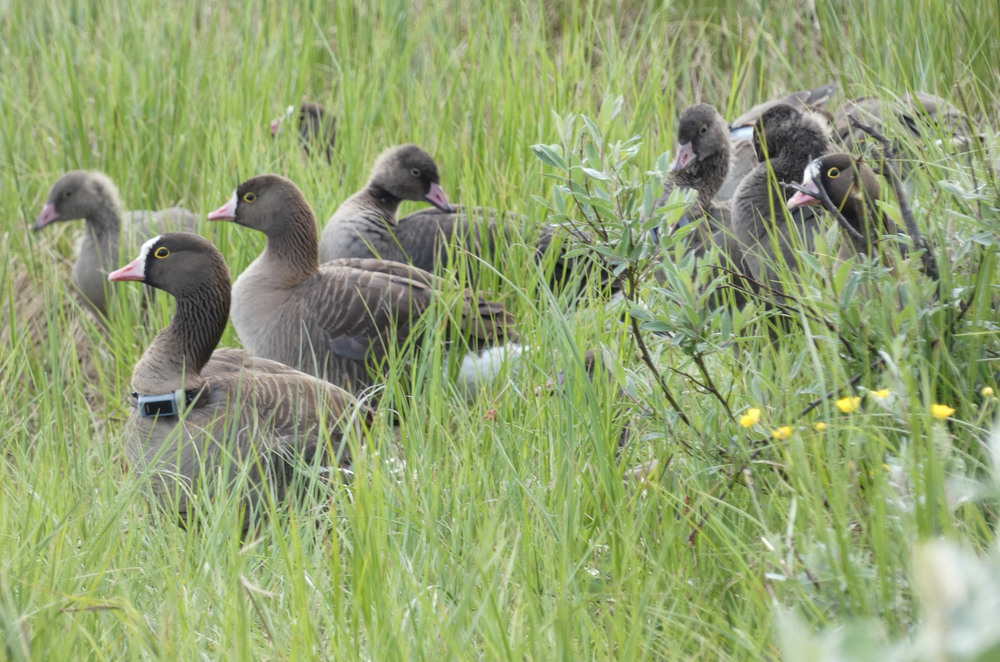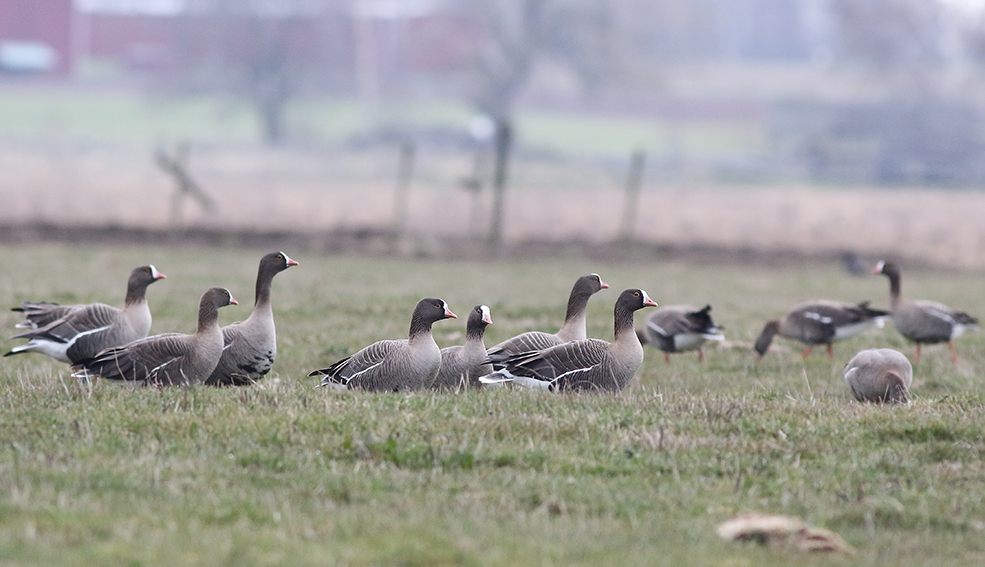Reports
Four reports on Swedish LWfG
In recent years a number of reports and articles covering the Swedish LWfG population have been published. Some of them seem more important than others and deserve attention again. Below, a short description can be found.
None of the following four titles are included in the literature list on LWfG presented on BirdLife Norway´s international website (piskulka.net). The list cover more than 700 references, but scientific papers and reports presenting messages that deviate from the Norwegian opinion and interest are not included.
Schekkerman, H. & Koffijberg, K. 2020. Annual survival estimation and population modelling for Swedish Lesser White-fronted Goose. Sovon-rapport 2020/90.
Survival in the year directly after release of captive-reared birds was found markedly lower than that of adults and the production does not balance mortality in the population. This means that without further augmentation, the population would show a continued decline, of about 15% per year. Both relatively low survival and poor breeding success seem to contribute to this imbalance.
The release of captive-bred individuals has been essential in avoiding a further steep decline after the crash 2011-2013. There is some indication that survival in the most recent years has been somewhat higher than earlier. If releases are continued, the population will initially grow further, but then stabilise at around a total population of roughly 180 birds affected by the numbers released.
Diez-del-Molino D, von Seth, J., Gyllenstrand, N., Widemo, F., Liljebäck, N., Svensson, M., Sjögrem-Gulve, P., & Dalén, L. 2020. Population genomics reveals lack of greater white-fronted goose introgression into the Swedish lesser white-fronted goose. Scientific Reports Volume 10.
The complete genomes of 21 birds from the Swedish, Russian and Norwegian LWfG populations were sequenced, and compared with genomes from other goose species, including the GWfG. No evidence of interspecific introgression into the wild Swedish LWfG population in either nuclear genomic or mitochondrial data were found. Therefore, it is highly unlikely that the reinforcement programme between 1981 and 1999 led to the introduction of introgressed genes into the wild Swedish population.
Swedish LWfG birds are genetically distinct from the Russian and Norwegian populations and display comparatively low genomic diversity and high levels of inbreeding. The comparatively lower diversity in the population indicates a reduced potential to adapt to changes in the environment, but the second release programme 2010 may have resulted in a restoration of genetic diversity and mitigation of inbreeding in the population.
Liljebäck, N., Koffijberg, K., Kowallik, C., Månsson, J. & Andersson, Å. 2021. Use of foster parents in species conservation may cause conflicting objectives: hybridization between Lesser White-fronted Goose Anser erythropus and Barnacle Goose Branta leucopsis. Ornis Svecica, 31, 125–138.
An LWfG conservation programme launched in the late 1970s used Barnacle Geese Branta leucopsis as foster parents. Starting in 2003, mixed pairs LWfG x BG produced at least 49 free-flying hybrid offspring until 2013. In total 1.7 % of all released young males with foster parents were observed to produce hybrid offspring with Barnacle Goose females. As a response, the conservation program decided to remove LWfG males in mixed pairs and their offspring in the wild.
In the Netherlands, hybrids were reported annually from 2003/2004 onwards. The highest numbers were recorded between 2008/2009 and 2013/2014 (maximum of 8–15 birds per year). Only one observation was reported from Finland and none from Norway. In the breeding area (and release site) of LWfG in the mountains of Arjeplog, no hybrids or mixed pairs were ever found.
No evidence that the hybrids ever posed a serious threat to LWfG breeding in Fennoscandia was found, but any translocation program using foster parents should seriously take into account the risk that hybrids between the target and foster species may be produced.
Kruckenberg, H., Moonen, S., Kölzsch, A., Liljebäck, N., Müskens, G.J.D.M. 2023. Migration routes and stepping stones along the western flyway of Lesser White-fronted Geese (Anser erythropus). Bird Conservation International, 33, e42, 1–8.
This article is based on transmitter data from four Lesser White-fronted Geese which was caught and provided with a transmitter in Hudiksvall in 2015 and 2016. All four tracked LWfG visited the core breeding area in Swedish Lapland and migrated to winter in the Netherlands. The transmitter data was processed and statistically examined and the final result revealed several, so far unknown, stopover sites in Sweden, Denmark and northern Germany.
Of new sites identified, Roden Fed in Danish Lolland was pinpointed as a site of great importance since the LWfG was staging there for about four weeks annually. Of the in total 22 identified sites, 7 were not listed as SPAs and of the 14 sites that was listed, 6 of them lacked LWfG in the list of species special importance. The article spotlight the fact that from a species protection perspective mapping all sites used during migration and wintering is essential for a small and vulnerable population, like the Lesser White-fronted Goose in Western Europe. An effective protection regime for the mapped sites could prohibit threats regarding hunting or degradation of foraging areas. A complete chart of all the staging sites and their SPA status can be found in the article.
All tracked autumn migrations started from the same site (Lake Hjälstaviken, Sweden). In most years all birds also left this site on the same night, indicating coordinated departure of flocks for autumn migration. Data also describe that migration routes and strategies differed between spring and autumn which is in accordance with previous research on other goose species.
The study found little evidence of geographically overlap of migration routes described for the Norwegian and Russian LWfG populations. Therefore, the authors suggest the Swedish population can be viewed as a separate conservation unit.
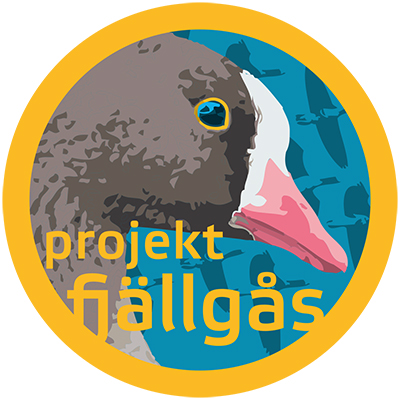
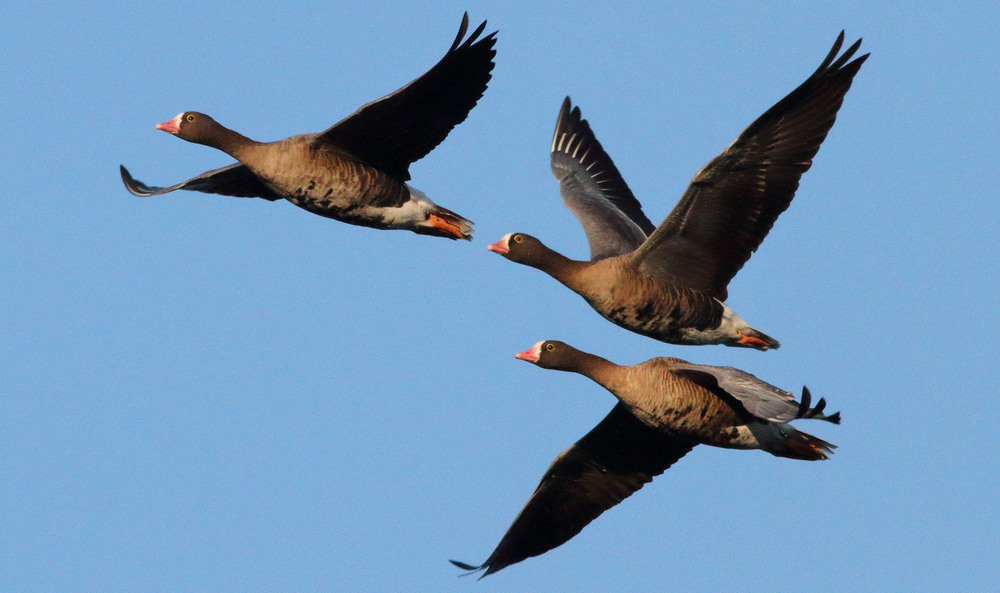
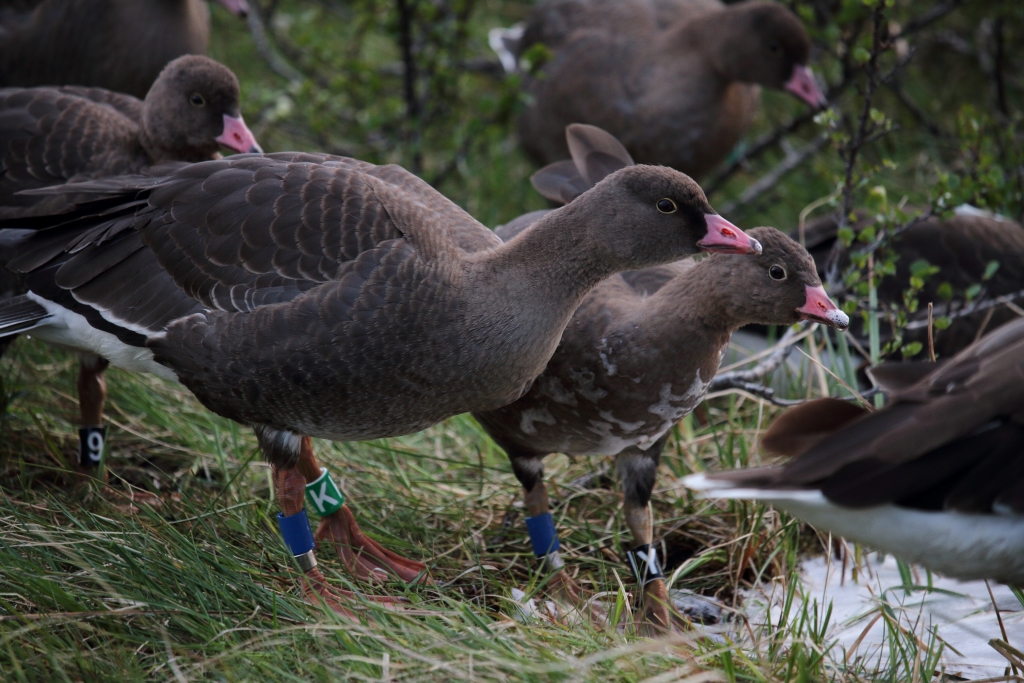
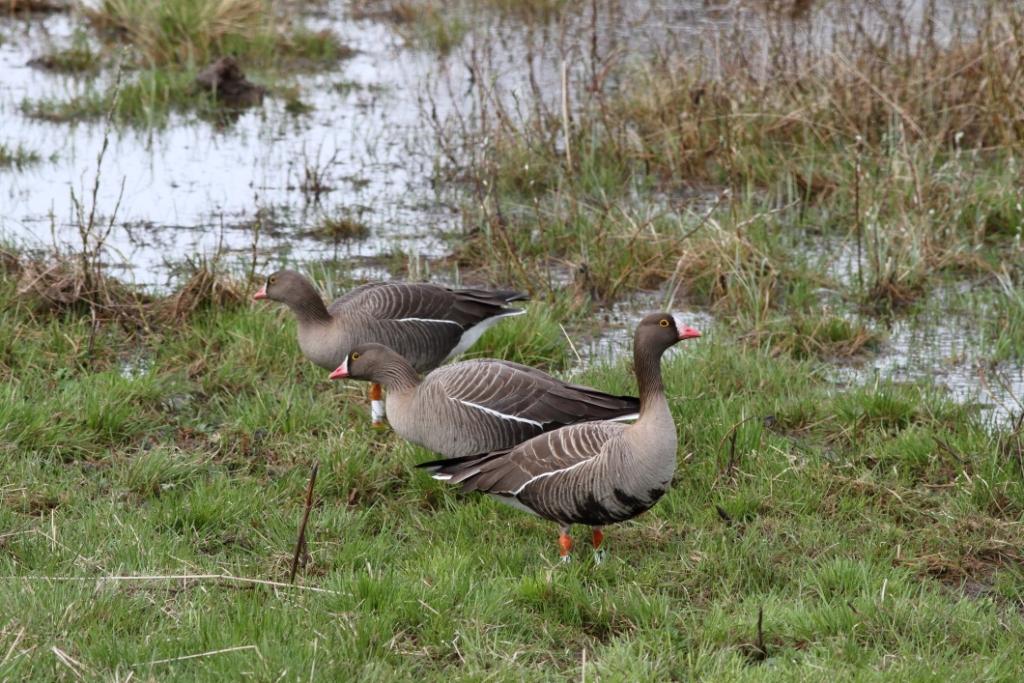
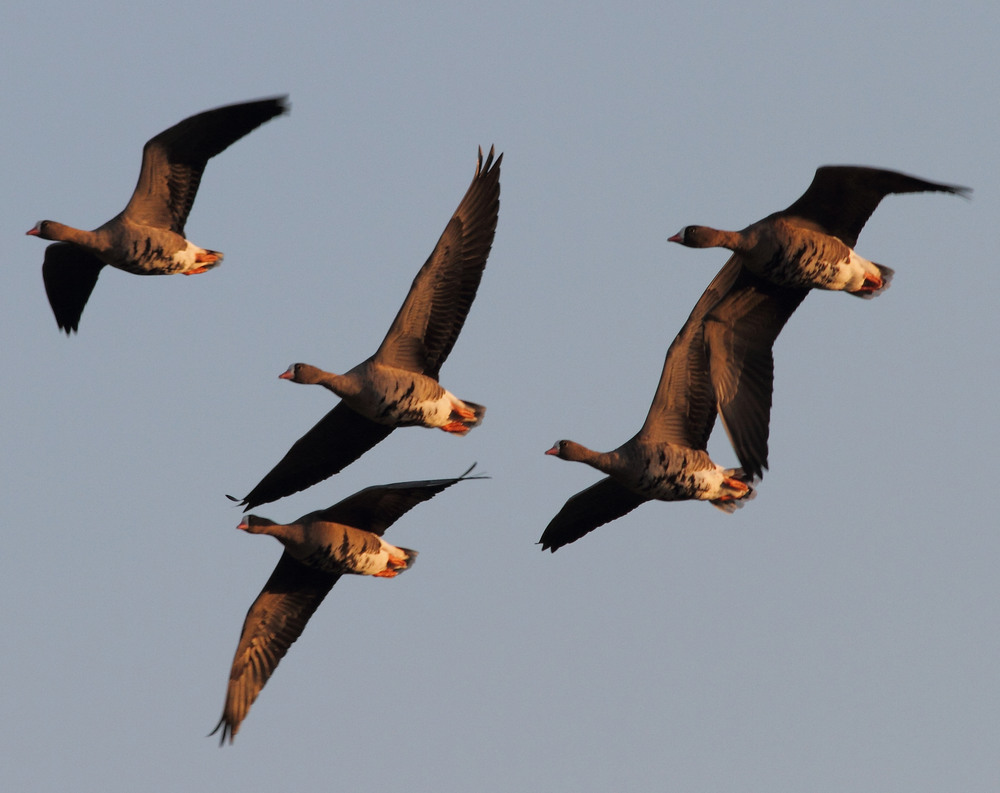 The population then suffered a dramatic decline. In 1970 there was only a small part of the Swedish population left. As a reaction to the population decrease, Lambart von Essen at the Swedish Hunting Association and his colleagues initiated a conservation project for the Lesser White-fronted Geese (hereafter LWfG) in 1975. The first years after the Project had started, they put a lot of effort in trying to locate wild LWfG still breeding in Sweden. They also tried to investigate what had happen to the population and a lot of interviews was done with local inhabitants and native people in the Swedish mountainous area. In 1981 the first release of young LWfG, bred in captivity, was done in the mountains of Arjeplog, Sweden. This, as an attempt to reinforce the wild LWfG population breeding in Sweden.
The population then suffered a dramatic decline. In 1970 there was only a small part of the Swedish population left. As a reaction to the population decrease, Lambart von Essen at the Swedish Hunting Association and his colleagues initiated a conservation project for the Lesser White-fronted Geese (hereafter LWfG) in 1975. The first years after the Project had started, they put a lot of effort in trying to locate wild LWfG still breeding in Sweden. They also tried to investigate what had happen to the population and a lot of interviews was done with local inhabitants and native people in the Swedish mountainous area. In 1981 the first release of young LWfG, bred in captivity, was done in the mountains of Arjeplog, Sweden. This, as an attempt to reinforce the wild LWfG population breeding in Sweden.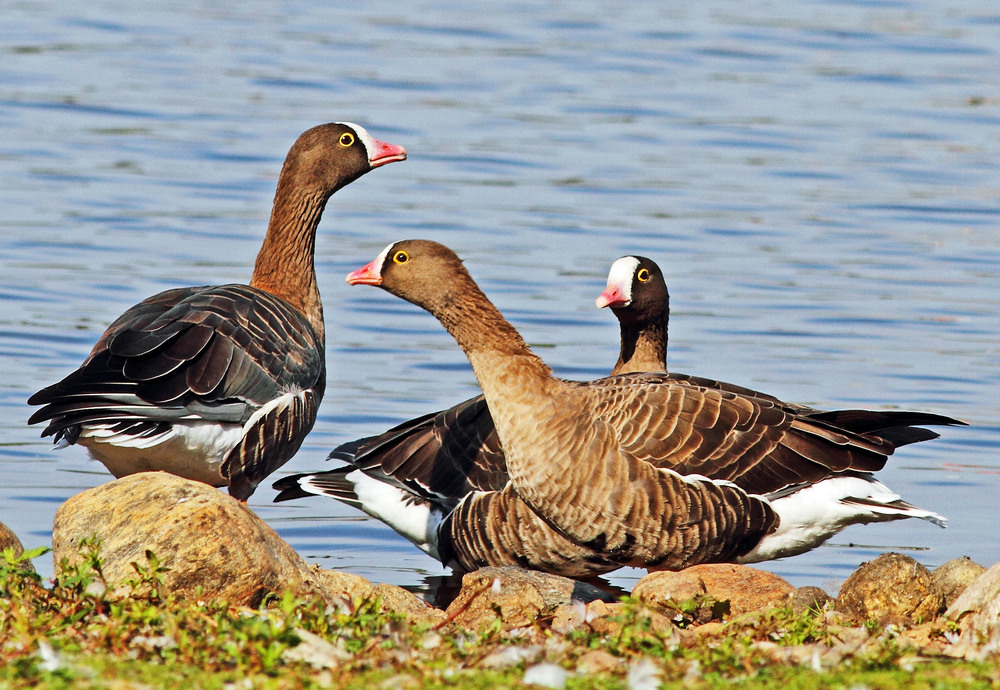 Foto: Niklas Liljebäck
Foto: Niklas Liljebäck